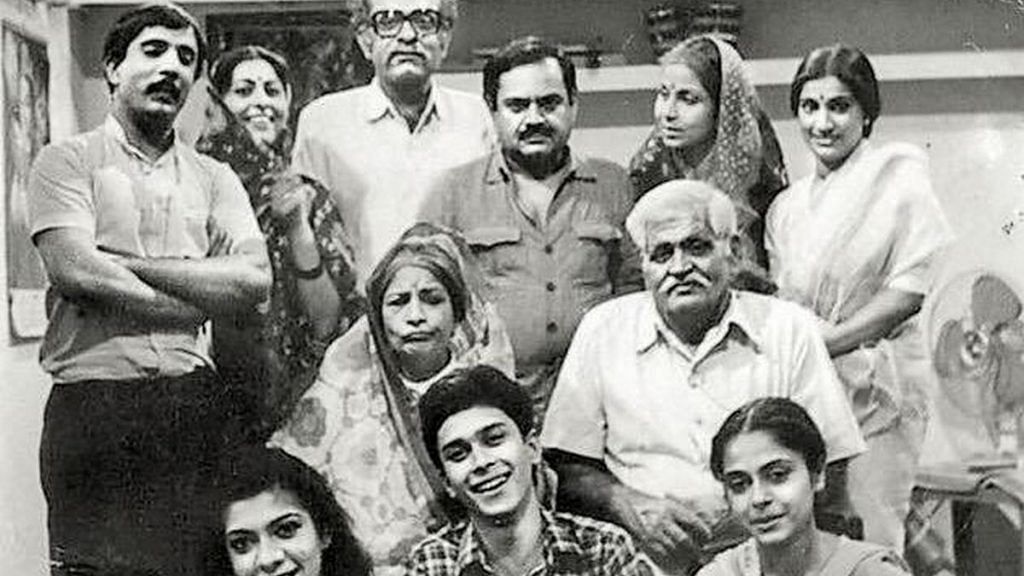In 1984, Doordarshan had begun airing India’s first and longest running soap, Hum Log. The serial was started at the initiative of the then Information and Broadcasting secretary, S. S. Gill.
In 1983 an Indian team led by Gill had visited Mexico to study the pro-development soaps of Miguel Sabido. These soaps were different from the regular commercial soaps aired on American television in the sense that they combined entertainment with specific messages to promote some aspect of development.
On his return, Gill commissioned a private producer, Shobha Doctor, to create a series that would combine a storyline with progressive messages on family planning, the status of women and so on and Hum Log was born.
The first few episodes, in the best traditions of Indian television, were didactic and preachy. There was a demand to take the serial off the air. But Gill conducted a review and changes were made emphasising the story. And soon, Hum Log was climbing the charts. The success of the serial indicated the existence of a huge market for well-made indigenous programmes. And the government’s decision to go commercial laid the foundations for a new software industry.
Doordarshan still held the reins. On paper at least, its approval for a programme was subject to the inclusion of pro-development messages in the content. Nevertheless, the focus had shifted clearly towards entertainment.
From a few hours of dull, education-heavy programming, Doordarshan expanded its telecast time with lively fare that included Khandaan, a Hindi serial on the lines of Dynasty, Buniyaad, a family saga beginning in pre-Partition India, Ek Kahani on villagers struggling against feudal oppressors and Subah on contemporary college life.
Also read: Devil’s in the detail: How Onida TV became a household name in the ’80s
There were thrillers such as Karamchand and Khoj; sitcoms such as Yeh Jo Hai Zindagi, Mr Ya Mrs and Rajni set around ordinary middle-class couples in ordinary middle-class homes. There were also serials for children and sports programmes. The appearance of diversity was somewhat deceptive. Most of the new programmes, particularly the top-rated ones, portrayed an urban elitist way of life that was alien to the majority of the country’s people.
A study conducted by Arvind Singhal and Everett Rogers in 1987 discovered that 60 per cent of low-income households felt that television did not adequately project the difficulties and problems of their daily lives; over 90 per cent of artisans and labourers felt that the knowledge and skills of their occupational category were not properly depicted; and 85 per cent of low caste viewers felt their needs and aspirations had no place on the electronic medium.
Since the national programme, on which the new serials were aired, was in Hindi, an inevitably high percentage of non-Hindi speakers (60 per cent) also felt alienated. Despite inadequate representation, the new glossy look immensely boosted the popularity of television in India. And presented with a few hours of free, well-packaged diversion every evening most television owners chose to stay increasingly at home. This, predictably, took audiences away from other media. The least accessible of them all, theatre, was inevitably the worst affected.
At Prithvi, wads of tickets remained unsold. Television had taken away much of the acting talent. But even the die-hard performers that stayed on were battling against a powerful competitor for an audience. Ironically though, theatre was more in the news than ever before. From the early 1980s onwards, a transformation had been taking place in the print media. Politics, the dominant theme of the Indian press, was giving way to light features on lifestyle, people, entertainment and so on.
The reason for the change was an amalgamation of various factors: an upsurge in advertising, the arrival of various glossy magazines in the previous decade, the evolution of an upmarket audience, increased competition and the entry of professionals from other fields into journalism.
Plays and theatre personalities were attractive subjects for soft stories and newspapers began to compete to give the best theatre coverage.
This is an excerpt from “Telly-Guillotined How Television Changed India’’ written by Amrita Shah – renowned journalist and writer, and the award-winning author, Ahmedabad: A City in the World (2015) – 2019 / 304 pages / Paperback: Rs 595 ( 9789353286057)/ SAGE Select YODAPRESS
